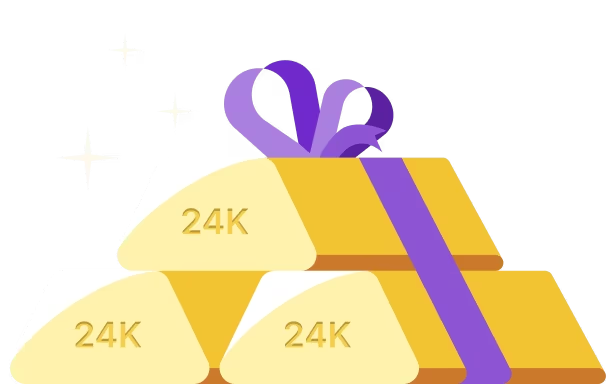We all know how a proper budget can help in controlling our finances. It helps in tracking our spending habits and getting our finances in order. Knowing how to make a budget worksheet will help you analyse your income, expenses and savings.
Budget worksheet is a simple planning tool that will enable users to plan for future income and spending. A budget worksheet can assist in determining our priorities and, in some cases, changing our spending habits over time.
To get a clear picture from a budget worksheet, try to gather all the information about the total income and expenses. We can obtain full information by looking through bank statements, credit card statements, etc. Budgeting worksheets enable us to confidently manage our money.
So, in this article, we will cover how a budget worksheet can be important for us and how to create one to make your money management easier.
What are the benefits of a Budget worksheet?
1. A budget worksheet helps us to know the summary of our finances to determine how much money we have spent in a month.
2. It is easy to determine whether we have extra money for savings or need to reduce expenses using this simple tool.
3. Helps us to save on unnecessary costs.
4. If we develop the habit of using a budget worksheet, we may find that we spend less and save more.
What information should a budget worksheet contain?
The budget spreadsheet can be used to pay off bills, save money for retirement or large purchases, or even just survive until the next paycheck. Here are the important things which we should include in your budget worksheet:
1. Total income: It includes the monthly salary (after taxes and other benefits), royalties, pension or any other sources of income like child support or any investment income.
2. Transportation costs: These include insurance and maintenance, parking costs, tolls, public transportation costs, etc.
3. Food: Restaurants expenses, Groceries, etc.
4. Health expenses: Medicine, doctor’s appointments, and others.
5. Household expenses: Rent or mortgage, Utilities (like electricity and gas), Internet, cable, phones, etc.
6. Personal or family expenses: Clothing and shoes, Laundry, Entertainment, Child care and support.
7. Debt costs: Credit cards, home loans, student loans, etc.
8. Savings: Any emergency fund contribution, retirement savings, mutual funds, FDs, etc.
9. Miscellaneous: It will include all the other expenses like vacation, donations towards charitable costs, or any other expenses which are not mentioned above.
Steps to create a Budget Worksheet
1. Make the worksheet: Now for creating a worksheet, we can use a notebook or any software program or even any template. Excel and Google sheets are the most commonly used programs. Then, make four columns: one with the item list, another for the budgeted numbers, the third one for the actual amounts you spend and save and the fourth column displaying the distinction between the two, allowing us to see a complete picture of our progress. The number of rows in the worksheet will vary depending on what you want to track.
2. Make a list of the metrics to monitor: List all the items which need to track in the first column of the worksheet. Begin with "Income," and then add sections for expenses, savings, and any other costs you want to include. Now, to make it attractive and easy to understand, I use bold styling and colours.
3. Estimated budget: The estimated amounts will appear in the second column. Include the amount you expect to spend or save for each category. So, these are the anticipated amounts which you planned in the beginning. For example, if I expect ₹8,000 to pay for my groceries. So, I’ll write the estimated amount in the second column. However, these amounts may get changed while I will write the actual amount.
4. Keep track of the actual figures: Track weekly spending and savings in the third column of the budget sheet. Now, we may find a difference in the amount if compared with the anticipated amounts in the second column. This is due to the change in the prices of some variable expenses like groceries, entertainment, etc. However, most of the costs will remain the same like insurance premiums, rent, etc.
5. Check the difference: Once we have punched all our numbers, it’s time to check the result. Now, manually subtracting the budgeted numbers and actual numbers will be time-consuming. So, I use simple formulas to make my process easy. If my difference between both columns is high, then I need to keep control of my spending.
6. Choose a Budget Period: We can budget daily, weekly, monthly, or annually. To determine the period to update and track our budget, we should consider the frequency of payment, how closely you want to keep track of the finances and how much time are you willing to devote to updating your budget. We can also use several budget periods at once.
7. Update the budget: Make sure to regularly update the budget with the actual expenses. Don't be concerned if your planned and actual income and expenses differ. I have experienced that the more I use a budget, the more accurate it becomes. Now that we know how much money we have left over at the end of each month, the focus should be on how much to invest and save every month.
Final Thoughts
A budget worksheet is an effective tool to manage our finances. By searching online for budget worksheet templates, we can save some time only if we have little experience with spreadsheet software. We just need to enter the amount of our total income and expenses into the worksheet to get the summary.
We also have the option to print the worksheet. Use the worksheet to track how much money you make each month and where it goes. Then look for ways to reduce expenses so that you can meet your financial objectives.










